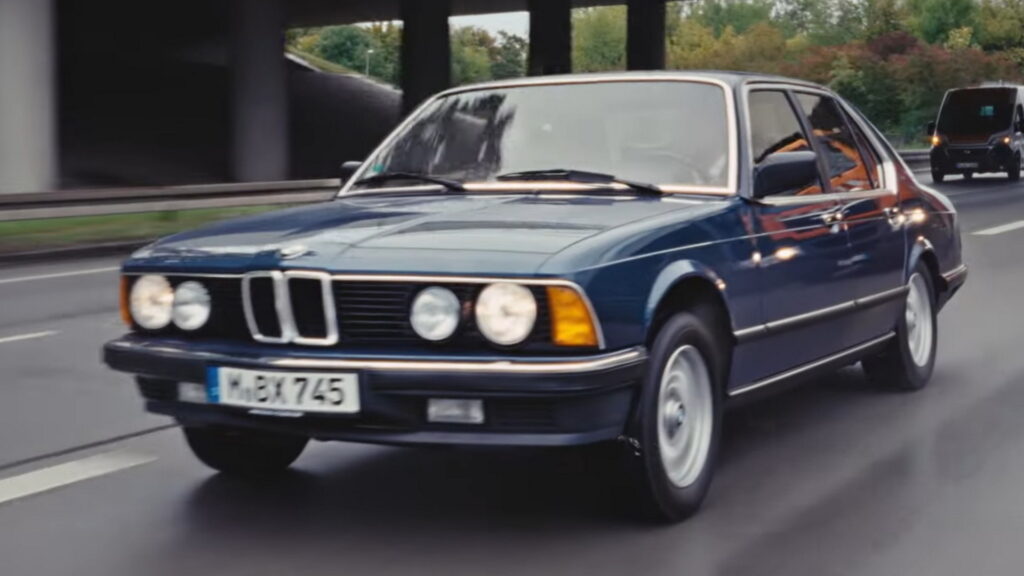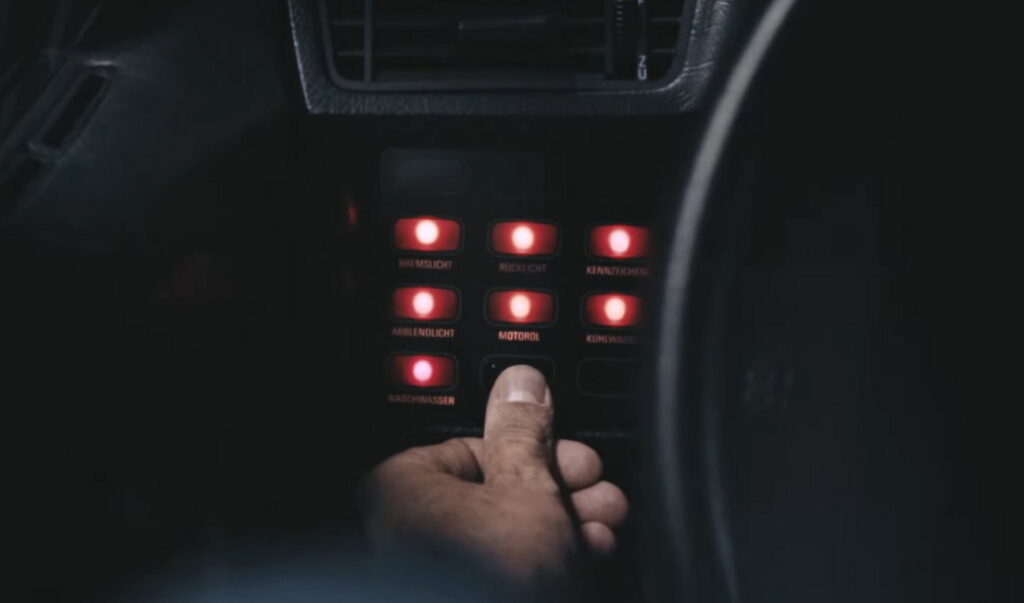
by Sebastien Bell
Now that the seventh-generation BMW 7-Series has been revealed, BMW Group Classic thought that it was the perfect time to take a look back at the history of the model line. The department’s YouTube channel, then, has taken a look back at the very first generation of the car.
The 7-Series was the last model to get BMW’s new numerical naming conventions and was produced from 1977 until 1986 and the top-of-the-line 745i was powered by a big, beefy 3.2-liter inline-six when it was introduced.
That is not, however, 4.5-liters, as the model name would suggest. The hosts explain, though, that’s because the engine was turbocharged, and by BMW’s math, it produced the same amount of power (248 hp/185 kW/252 PS) as a naturally-aspirated, 4.5-liter engine.
Read: This Guy Loves Old BMW 7 Series Models So Much That He Owns 15 Of Them

Proving that BMW was happy to round up and down when it suited them, the 745i was offered with a 3.5-liter I6 in South Africa between 1984 and 1986. That must have been exciting for the people there, because that was the same engine that powered the BMW M1, and it made 281 hp (210 kW/286 PS) in the luxury sedan.
And luxurious it was, with its blue velvet interior and wood trim. Not only that, but it was also a tech showpiece for the brand. Featuring as many buttons you could reasonably be expected to shake a stick at, the interior has fascinating features like a control panel checker. This allowed the driver to press a button and quickly check if they had enough of all of their fluids.
advertisement scroll to continue
Despite being designed for the 1977 model year, the 7-Series was also endowed with an onboard computer. Although it wasn’t the first BMW with a computer, it did introduce futuristic features, like an estimated time of arrival for your trip. In terms of safety, it was also a leader, with newfangled crumple zones as well as strengthened A, B, and C pillars that meant that the car was much safer in an accident.
Ultimately, the 7-Series tells a story of the wider automotive world. This first-generation car heralded the advent of modern safety and computer technology, and now the BMW i7 is coming at a time of similar advancements in the field of propulsion technology. It will, therefore, be interesting to see how the car is remembered in another 40 years.